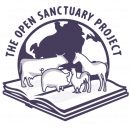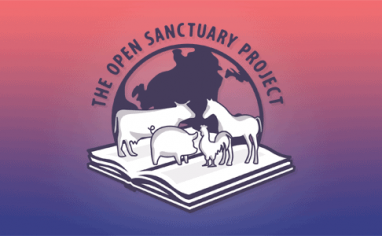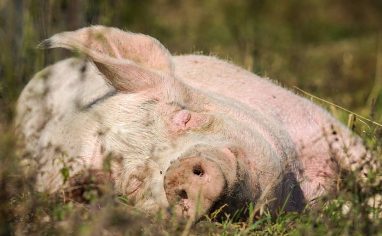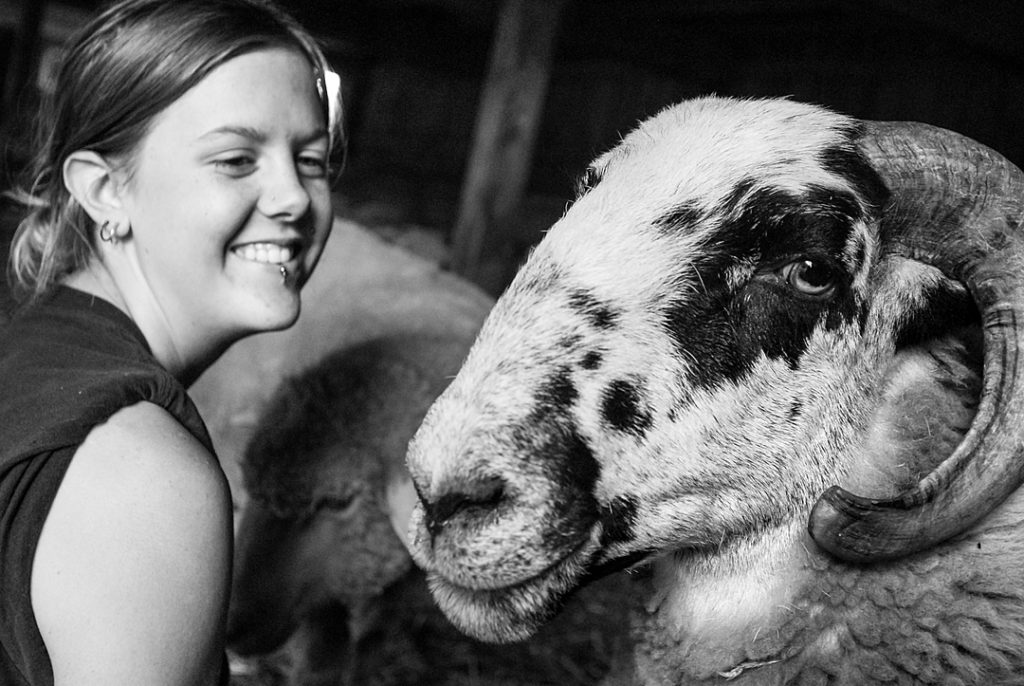
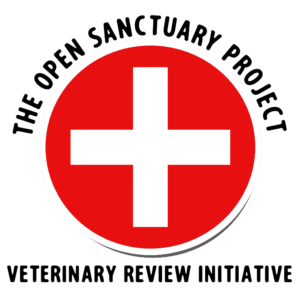
Veterinary Review Initiative
This resource has been reviewed for accuracy and clarity by a qualified Doctor of Veterinary Medicine with farmed animal sanctuaryAn animal sanctuary that primarily cares for rescued animals that were farmed by humans. experience as of November 2022. Check out more information on our Veterinary Review Initiative here!
If you’ve spent much time looking through our offerings, you likely know the important role routine health checks play in keeping residents healthy and catching signs of concern early. Performing health checks regularly is imperative, but this should not be the only tool you use to monitor your residents’ health and well-being. The importance of thoughtful daily observation cannot be overstated. While some issues may be difficult to detect without a hands-on health checkThe Open Sanctuary Project uses the term "health check" to describe health evaluations performed by caregivers who are not licensed veterinarians. While regular health checks are an important part of animal care, they are not meant to be a replacement for a physical exam performed by a licensed veterinarian., there are other potential signs of concern that could be missed during a health check, particularly those that manifest as slight changes in behavior or activity. By incorporating both daily observation and routine health checks into your care protocols, you are more likely to catch issues that develop in the period between health checks, as well as issues that are unlikely to be detected without a hands-on evaluation.
When it comes to daily observation, the keyword is “thoughtful.” Daily observation of residents must be more than just looking at them. Anyone caring for an animal, regardless of their species or breed, should be trained to observe the individuals in their care for behaviors and physical signs that are abnormal for the species, keeping in mind issues that are common in a particular species or breed and their warning signs. Of equal importance is getting to know the individuals being cared for and watching for things that are out of the ordinary for that particular individual. To read more about refining your observation skills, check out our resource here.
Familiarize Yourself With “Normal”
In order to identify signs of concern, it’s helpful to first consider how a healthy sheep typically looks and acts. While all sheep are unique individuals, there are some general characteristics that most healthy sheep will present. However, there is going to be some variation based on the individual’s breed and unique characteristics, so it’s also important to learn what is “normal” for each individual in your care.
With that in mind, in general, a healthy sheep should:
- Be bright and alert, though they do relax during the day
- Spend a significant portion of the day eating and ruminating
- Have clear, bright eyes
- Hold their ears so that the inside of their pinna is facing forwards rather than facing down
- Stand and walk with a fairly flat back
- Walk with an even gaitA specific way of moving and the rhythmic patterns of hooves and legs. Gaits are natural (walking, trotting, galloping) or acquired meaning humans have had a hand in changing their gaits for "sport".
- Rise from lying down with general ease
- Urinate and defecate with ease and without signs of pain
- Produce well-formed fecal pellets (these pellets may cake together, but should still be easily identifiable as distinct pellets)
- Stay relatively close to/within sight of their flock mates
Potential Signs Of Concern
Now that we’ve got an idea of what is “normal,” let’s look at potential signs of concern.
Because every resident is an individual, it’s important to get to know the unique individuals in your care so you can recognize when they are not acting like themselves. Caregivers who really spend time getting to know their residents in terms of their personality, typical behaviors, physical characteristics, and routines can sometimes catch when something is wrong before there are clear signs of illness or distress. Sometimes it’s something as subtle as an individual not running up to greet you as they normally would. Any time you notice a change in an individual’s typical behavior or routine, it’s a good idea to perform a health check and keep a close eye on them.
While not an exhaustive list, during your daily observation of your residents, be on the lookout for the following:
General signs of pain/discomfort, such as…
- Tooth grinding
- Grunting
- Vocalizing more than usual
- Lying down and then immediately standing back up over and over as if they cannot get comfortable
- Constantly shifting their weight
- Facial grimace (eyes partially closed, ears down, tightened muscles around the mouth and nose – this is sometimes misinterpreted as looking tired)
- Sensitivity to being touched (generally or in a specific area)
Changes in their posture, gait, mobility, or activity level, such as…
- Holding themselves in a “stretched” position or in a “sawhorse” stance
- Standing or walking with a hunched back
- Head tilting or stargazing (holding their head so they are looking upwards)
- Difficulty or inability to rise. A sheep who is stuck on their side (in lateral recumbencyRecumbency is the state of leaning, resting, or reclining.) must be propped into a sternal position to prevent life-threatening bloat. If a sheep is unable to rise, this is an urgent matter, and you should consult with your veterinarian immediately.
- Standing or walking on their carpi (often referred to as the “front knees”)
- Limping, stiffness, dragging, weakness, taking shorter steps than usual, trying to keep weight off a particular limb, or bobbing their head when they walk
- Incoordination, staggering, or circling
- Muscle tremors
- Lying down more than usual (or remaining down while the rest of the flock is active)
Changes to their physical appearance, such as…
- Distention of the abdomen, particularly the left side (this, plus signs of pain, is indicative of bloat, which can be a life-threatening situation)
- A gaunt appearance
- Weight loss or a loss of body condition
- Changes to their coat, including unexplained hair/wool loss (please note that hair sheep do shed) or hair/wool that appears dirty
- Skin changes such as lumps, lesions, scabbing, discoloration (in isolated patches or more generally), or oozing sores (these issues can be difficult to detect in woolen individuals and may not be apparent without a hands-on evaluation)
- Sunken eyes (this is a sign of dehydration)
- Squinting, ocular discharge, or changes to the appearance of the eye (including cloudiness)
- Nasal discharge
- One side of their face drooping
- One or both ears drooping
- Swelling of the jaw or swelling/fluid build-up under the jaw (“bottle jaw”)
- Excessive drooling or green staining around the mouth
- Swelling or redness above the hoof, between the claws, or under the dewclaws
- Vaginal discharge or prolapsethe falling down or slipping of a body part from its usual position or relations
- Pale mucous membranes
Changes in behavior, such as…
- Kicking at their abdomen
- Head pressing
- Avoiding or being rejected by flock mates or not trying to remain near the flock
- Changes to their daily routine or behaving differently than they usually do
- Females presenting male behaviors such as pawing at other females and curling their lip (flehmen response)
- Responding differently to human presence/interaction than what is typical for them (i.e. for those who typically seek out human attention, suddenly avoiding humans or seeming indifferent to their presence would be a red flag, and for individuals who usually avoid human interactions and try to keep their distance, suddenly seeming indifferent to human presence and not attempting to move away from them would similarly be cause for concern)
Changes to their eating and drinking, such as…
- Exaggerated chewing, packing cudFood matter that returns from the first stomach compartment back to the mouth for further chewing in their cheek, or dropping wads of cud or other food
- Disinterest in eating or eating less than usual
- Showing initial excitement about food but then not actually eating
- Chewing cud less than usual (If you are concerned, you can listen to their rumen and count rumen contractions which will give you important information to share with your veterinarian. To learn how to do this, check out How To Conduct A Sheep Health Check and scroll down to “Check Their Rumen”).
- Not drinking water or being excessively thirsty
Other things to watch for include…
- Open-mouth breathing, nasal flaring, labored breathing, or an elevated respiratory rate (Different sources offer different ranges, but according to Large Animal Internal Medicine, 5th Edition, the resting respiratory rate of adult sheep ranges from 12-72 breaths per minute with an average of 36)
- Coughing, wheezing, or other abnormal breathing sounds
- Abnormal smell to their breath or body
- Straining during urination or defecation (if a male is straining to urinate, particularly if they do not have a good, steady stream of urine, this is a medical emergency)
- Diarrhea
- Abnormal body temperature (in some cases, individuals may feel excessively warm or cool to the touch, or their extremities or ears may feel cold). If you have concerns about a sheep’s body temperature, you should take their rectal temperature (normal is about 102-103.5 Fahrenheit/39-40 Celsius, though this can be affected by the ambient temperature, so comparing an individual’s rectal temperature to a flock mate’s may be useful).
- Udders that are hot, swollen, firm, painful, discolored, or oozing
- Flies swarming a particular area (which may be an indication of a wound)
If you see any of the signs above or anything else out of the ordinary, be sure to investigate further and consult with your veterinarian as needed. Depending on the severity and whether or not there are multiple signs of concern, the individual may need to be seen by a veterinarian immediately. In some cases, conducting a health check, either in full or in part, can help you to gather more information about the individual to share with your veterinarian so they can help determine the best course of action.
Now that you have an idea of what to look for, be sure to build thoughtful daily observation into your caregiving routine if you haven’t already! The more you observe your residents, the better you’ll become at differentiating between “normal” and potentially concerning. Whenever you’re in doubt, err on the side of caution and contact your veterinarian for guidance.
SOURCES:
How To Read Pain On A Sheeps’ Face – The Facial Grimace | Sez the Vet
Sheep And Goat Medicine, Second Edition | D.G. Pugh And A.N. Baird (Non-Compassionate Source)
Large Animal Internal Medicine 5th Edition | Bradford P. Smith (Non-Compassionate Source)
Herd Health Management – Dairy Goats And Sheep | Alabama Cooperative Extension System (Non-Compassionate Source)
Non-Compassionate Source?
If a source includes the (Non-Compassionate Source) tag, it means that we do not endorse that particular source’s views about animals, even if some of their insights are valuable from a care perspective. See a more detailed explanation here.


